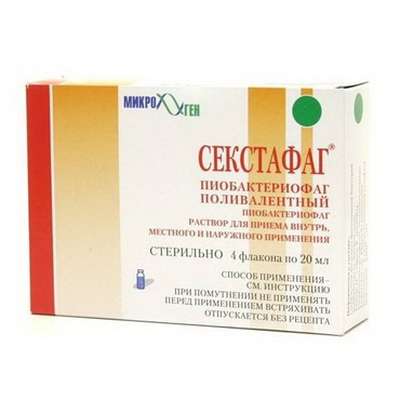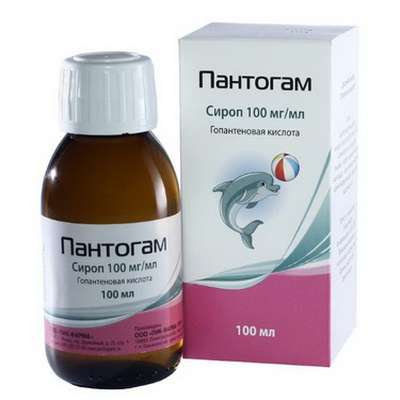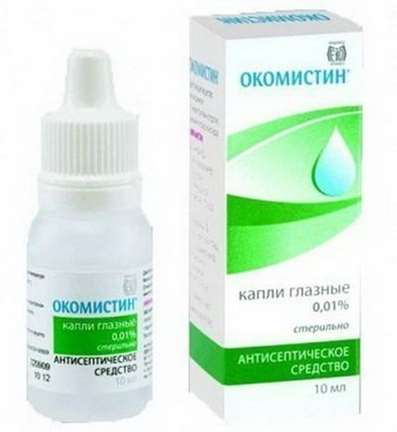Instruction for use: Aspirin Complex
I want this, give me price
Active substance Acetylsalicilic acid + Phenylephrine + Chlorphenamine
ATX Code R05X Other remedies for catarrhal diseases
Pharmacological group
Remedy for elimination of symptoms of acute respiratory infections and colds (NSAIDs + alpha-adrenomimetic + H1-histamine receptors blocker) [NSAIDs - Salicylic acid derivatives in combinations]
Nosological classification (ICD-10)
J00 Acute nasopharyngitis [runny nose]
Viral rhinitis, Inflammation of the nasopharynx, Inflammatory diseases of the nose, purulent rhinitis, Nasal congestion, Nasal congestion with colds and flu, The difficulty of nasal breathing, The difficulty of nasal breathing for colds, Difficulty in nasal breathing, Difficulty in nasal breathing in colds, nasal, hypersecretion, cold, ARI with rhinitis phenomena, coryza, Acute rhinitis of various origins, Acute rhinitis with thick purulent mucous exudate, Acute nasopharyngitis, Swelling of the mucosa of the nasopharynx, Rhinitis, rhinorrhea, Infectious-inflammatory diseases of ENT organs, heavy cold, rhinopharyngitis, nasopharyngitis
J06 Acute upper respiratory infections of multiple and unspecified
Frequent colds viral diseases, Infections of the upper respiratory tract, Acute respiratory disease influenza character, for colds Pain, Acute colds,Cold, respiratory infection,Seasonal colds, Pain in infectious and inflammatory diseases of the upper respiratory tract, Bacterial infections of the upper respiratory tract, Bacterial respiratory infections, Viral disease of the respiratory tract, Viral respiratory tract infections, Inflammatory disease of the upper respiratory tract, Inflammation of the upper respiratory tract disease, Inflammation of the upper respiratory tract illness with difficult sputum, Inflammatory airway disease, Secondary infections with colds, Shortness of sputum in acute and chronic respiratory diseases, Upper respiratory tract infection, Infections of the upper respiratory tract, Respiratory Tract Infections, Infections of the respiratory tract and lungs, Infectious-inflammatory diseases of the upper respiratory tract, Infectious-inflammatory diseases of the upper respiratory tract and ENT-organs, Infectious-inflammatory diseases of the upper respiratory tract in children and adults, Infectious-inflammatory diseases of the upper respiratory tract, Infectious inflammation of the airways,respiratory infection, Qatar upper respiratory tract, Catarrh of the upper respiratory tract, Catarrhal disease of the upper respiratory tract, Catarrhal symptoms of the upper respiratory tract, Coughing with a cold, SARS, ARI, ARI with rhinitis phenomena, Acute respiratory infection, Acute infectious and inflammatory disease of the upper respiratory tract, Acute respiratory disease, Sore throat or nose, Respiratory viral infections, Respiratory diseases, Respiratory infections, Recurrent respiratory infections, Secondary infection with influenza, cold in the chest, Feverish condition with flu usitis, acute sinusitis, genyantritis, purulent sinusitis
J11 Influenza, virus not identified
Flu, Influenza in the early stages of the disease, Flu in children, cold in the chest, Begins flu-like condition, Acute disease parainfluenza, parainfluenza, parainfluenza state, influenza epidemics, The pains of the flu, Influenza
M79.1 Myalgia
Myofascial pain syndromes ,Pain syndrome in musculo-articular diseases, Pain syndrome in chronic inflammatory diseases of the musculoskeletal system, Pain in the muscles, Tenderness of muscles, Muscular soreness in severe physical exertion, Painful conditions of the musculoskeletal system, Pain in the musculoskeletal system, Pain in the muscles, Pain at rest, Muscle aches, Muscle pain, Musculoskeletal pain, Myalgia, Muscle pain, Muscle pain at rest, Muscle pain, Muscular pain of non-rheumatic origin, Muscle pain of rheumatic origin, Acute muscle pain, Rheumatic pain, Rheumatic pains, Myofascial syndrome, Fibromyalgia
R06.7 Sneezing
Sneezing
R07.0 Sore throat
A sharp pain in the throat, Sore throat
R50.0 Fever with chills
High fever, Heat, Chills, elevated temperature, hyperthermia, Prolonged fever, Feverish syndrome, Fervescence, Increased body temperature in infectious and inflammatory diseases, fever Symptoms, febrile syndrome, Febrile state, Fever, Fever in infectious and inflammatory diseases, Fever with SARS, Fever with cold, Fever for colds, febrility, Feverish condition with flu, Feverish state in infectious and inflammatory diseases , Feverish state of infectious diseases and in the postoperative period, Feverish condition for colds, Febrile of different genesis, Feverish syndrome on the background of infectious diseases, Feverish syndrome in infectious and inflammatory diseases, Feverish syndrome with colds, Feverish syndrome of different genesis, Increased temperature for colds, Increased temperature at catarrhal and infectious and inflammatory diseases, Increased body temperature in cold, etc., Increased body temperature in cold and other infectious and inflammatory diseases, Increased body temperature in cold and other infectious and inflammatory diseases, Fever during pregnancy, Fever with thrombocytopenia, Febrile reaction in blood transfusion
R51 Headache
Pain in the head, Cephalgia, Pain with sinusitis, Pain in the back of the head, Painful headache, Headache of vasomotor genesis, Headache of vasomotor origin, Headache with vasomotor disorders, Headache, Neurological headache, Serial headache
Composition
Powder effervescent for solution for oral administration 1 pack.
active substance:
Acetylsalicylic acid 500 mg
phenylephrine bitartrate 15.58 mg
chlorpheniramine maleate 2 mg
auxiliary substances: citric anhydrous acid - 1220 mg; sodium hydrogen carbonate - 1709.6 mg; flavoring lemon - 100 mg; dye quinoline yellow (E104) 0.32 mg
Description of dosage form
Fine-grained powder from almost white to white with a yellowish shade of color.
pharmachologic effect
Pharmacological action - anti-inflammatory, antipyretic, analgesic, vasoconstrictive, antihistamine.
Pharmacodynamics
Combined drug, the effect of which is due to its active components.
Acetylsalicylic acid has an analgesic, antipyretic, anti-inflammatory effect, which is due to inhibition of COX enzymes involved in the synthesis of PG. Acetylsalicylic acid inhibits platelet aggregation by blocking the synthesis of thromboxane A2.
Phenylephrine is a sympathomimetic and, having a vasoconstrictive effect, reduces edema of the mucous membranes of the sinuses of the nose, thereby facilitating breathing.
Chlorpheniramine belongs to the group of antihistamines, it alleviates symptoms such as sneezing and lacrimation.
Indications
To relieve symptoms of colds, acute respiratory infections, flu accompanied by fever, chills, headache and muscle pain, runny nose and / or nasal congestion, sore throat and sneezing.
Contraindications
hypersensitivity to acetylsalicylic acid and other NSAIDs or other components of the drug;
erosive-ulcerative lesion of the gastrointestinal tract (in the phase of exacerbation);
chronic or recurrent ulcer disease;
asthma caused by the intake of salicylates or other NSAIDs;
such blood clotting disorders as hemophilia, hypoprothrombinemia;
severe dysfunction of the liver and / or kidney;
polyposis of the nose, associated with bronchial asthma and intolerance to acetylsalicylic acid;
arterial hypertension;
angina pectoris;
an increase in the thyroid gland;
combined use with oral anticoagulants;
combined use with MAO inhibitors, including 15 days after discontinuation;
combined use of methotrexate in a dose of 15 mg per week or more;
retention of urine;
pregnancy (I and III trimester);
the period of breastfeeding.
The drug is not prescribed for children under 15 with acute respiratory infections caused by viral infections, because of the risk of developing Reye's syndrome (encephalopathy and acute fatty liver disease with acute development of liver failure).
Carefully:
with diseases of the lungs and kidneys;
glaucoma;
pheochromocytoma;
cardiovascular diseases;
diabetes mellitus;
hypertrophy of the prostate;
anemia.
pregnancy and lactation
Contraindicated in pregnancy (during I and III trimesters). For the duration of treatment, breastfeeding should be discontinued.
Side effects
Sometimes it is possible:
Acetylsalicylic acid
The body as a whole: hyperhidrosis.
On the part of the intestine: nausea, indigestion, vomiting, stomach and duodenum ulcers; gastrointestinal bleeding, incl. hidden (black chair).
Allergic reactions: urticaria, exanthematous skin rash, angioedema (Quincke's edema); runny nose, bronchospasm and shortness of breath;
On the part of the blood system: hypoprothrombinemia.
From the central nervous system and sensory organs: dizziness, ringing in the ears, headache, hearing loss.
From the side of the urinary system: renal failure, acute interstitial glomerulonephritis.
In rare cases (<1%) - toxic liver damage, especially in patients with juvenile rheumatoid arthritis; anemia, Reye's syndrome in children.
Phenylephrine
From the central nervous system and sensory organs: headache; insomnia, nausea, excitability, anxiety, dry mouth. In rare cases - severe headache, inadequate behavior.
From the cardiovascular system: rarely - increased blood pressure, tachycardia.
From the side of the urinary system: rarely - painful or difficult urination.
Chlorfeniramine
Organism as a whole: dry mouth; dryness of the oral and nasal mucosa, disruption of accommodation (blurred vision).
From the cardiovascular system: tachycardia.
On the part of the digestive tract: constipation.
On the part of the urinary system: retention of urination, difficulty and pain when urinating.
From the central nervous system and sensory organs: violation of attention, drowsiness, dizziness. In children and elderly patients, retardation, agitation, dizziness, anxiety, irritability are possible.
If any adverse reactions occur, stop taking the medication and consult a doctor.
Interaction
Acetylsalicylic acid
Ethyl alcohol, cimetidine and ranitidine with simultaneous use with acetylsalicylic acid increase its toxicity.
Heparin and indirect anticoagulants. With simultaneous use with acetylsalicylic acid increases the risk of bleeding by suppressing the function of platelets, displacing indirect anticoagulants from binding to plasma proteins and hypoprothrombinemia.
Corticosteroids increase the risk of secondary damage to the gastrointestinal mucosa.
When combined with zidovudine increased toxic effects of zidovudine and acetylsalicylic acid.
Acetylsalicylic acid reduces absorption of NSAIDs (indomethacin, phenoprofen, naproxen, flurbiprofen, ibuprofen, diclofenac, piroxicam).
Increases the concentration of phenytoin because of its displacement from binding to proteins.
Enhances the hypoglycemic effect of antidiabetic drugs and insulin due to the fact that acetylsalicylic acid in high dose has hypoglycemic properties and displaces the derivatives of sulfonylureas from binding to plasma proteins.
Strengthens the ototoxic effect of vancomycin.
Strengthens the effect of methotrexate by reducing renal clearance and displacing it from binding to proteins.
Salicylates reduce the uricosuric effect of probenecid and sulfinpyrazone due to competitive tubular elimination of uric acid.
Phenylephrine
MAO inhibitors (antidepressants - tranylcypromine, moclobemide, anti-Parkinsonian drugs - selegiline). With simultaneous use with phenylephrine, it is possible to develop severe side effects in the form of intense headache, increased blood pressure and body temperature.
Beta-blockers. With simultaneous use with phenylephrine, it is possible to increase blood pressure (arterial hypertension) and severe bradycardia.
Sympathomimetics. With simultaneous use with phenylephrine, the influence of sympathomimetics on the central nervous system and cardiovascular system is enhanced. Perhaps stimulation, irritability, insomnia.
Inhalation anesthetics. The use of finylephrine before inhalation anesthesia increases the risk of cardiac arrhythmia. It is necessary to stop phenylephrine treatment several days before the planned surgical treatment.
Rauwolfia alkaloids. With simultaneous use with phenylephrine, its therapeutic effect may decrease.
Caffeine. With simultaneous use with phenylephrine, the therapeutic and toxic effects of caffeine can be enhanced.
Indomethacin, bromocriptine. In isolated cases with simultaneous use with phenylephrine, severe arterial hypertension is possible.
SSRIs. With the simultaneous use with antidepressants of this group (fluvoxamine, paroxetine, sertraline) may increase as the sensitivity of the body to sympathomimetics, and the risk of developing a serotonergic effect increases.
Reduces the hypotensive effect of such hypotensive drugs from the group of sympatholytics, like reserpine, guanethidine.
Chlorfeniramine
Alcohol, hypnotics, tranquilizers, antipsychotics (neuroleptics), analgesics of central action. Chlorpheniramine can increase their inhibitory effect on the central nervous system.
Anticholinergic drugs - atropine, antispasmodics, tricyclic antidepressants, MAO inhibitors, antiparkinsonian drugs. Chlorpheniramine enhances their anticholinergic action.
Dosing and Administration
Inside, after eating, previously dissolving the contents of the sachet in a glass of water at room temperature.
Adults and children over 15 years: 1 pack. every 6-8 hours. The maximum daily dose is 4 pack., the interval between meals is not less than 6 hours.
Duration of treatment without consulting a doctor should not exceed 5 days - when prescribed as an anesthetic and 3 days - as an antipyretic.
Overdose
Symptoms: nausea, vomiting, ringing in the ears, deterioration of hearing and sight, rapid breathing, severe headache, imbalance, pronounced drowsiness, disturbance of the heart rhythm.
Treatment: gastric lavage, the appointment of activated charcoal, symptomatic therapy.
Precautionary measures
Acetylsalicylic acid can cause bronchospasm, an attack of bronchial asthma or other hypersensitivity reactions. Risk factors are the presence of bronchial asthma, polyps of the nose, fever, chronic bronchopulmonary diseases, cases of allergy in the anamnesis (allergic rhinitis, skin rashes).
Acetylsalicylic acid can increase the tendency to bleeding, which is due to its inhibitory effect on platelet aggregation. This should be considered when surgical interventions are required, including minor interventions such as tooth extraction. Before surgery, to reduce bleeding during surgery and in the post-operation period, you should cancel taking the drug for 5-7 days and inform the doctor.
Children should not be prescribed drugs containing acetylsalicylic acid, because in the case of a viral infection, the risk of developing Reye syndrome increases. Symptoms of Reye's syndrome include prolonged vomiting, acute encephalopathy, and enlargement of the liver.
During treatment, it is not recommended to drink alcohol because of the increased risk of side effects from the gastrointestinal tract associated with taking acetylsalicylic acid and increasing the sedative effect of chlorpheniramine.
Due to the fact that when chlorpheniramine is used, it is possible to change the parameters of skin allergic tests, it is recommended to inform the doctor about the use of the drug and to cancel it 3 days before the skin tests.
During treatment, it is not recommended to use anesthetics, sympathomimetics, guanethidine and beta-blockers.
It is not recommended to take the drug systematically and with a preventive goal before the vaccination.
With renal insufficiency with a decreased level of albumin in the plasma, the risk of the toxic effect of the drug increases.
special instructions
Patients who limit the use of salt, must take into account that each packet contains sodium bicarbonate.
The active ingredient phenylephrine, which is part of the drug, can cause a positive result in the doping test in athletes.
Aspirin® Complex can cause drowsiness and therefore worsen the ability to drive and move vehicles.
Form of issue
Powder effervescent for solution for oral administration. For 3547.5 mg in a paper bag, laminated with aluminum foil and a polyethylene film, 2 packages are connected in 1 strip (separated by a perforated strip); 5 strips are packed in a cardboard box.
Conditions of leave from pharmacies
Without recipe.
Storage conditions
At a temperature of no higher than 25 ° C.
Keep out of the reach of children.
Shelf Life
4 years.
Do not use after the expiry date printed on the package.

 Cart
Cart





